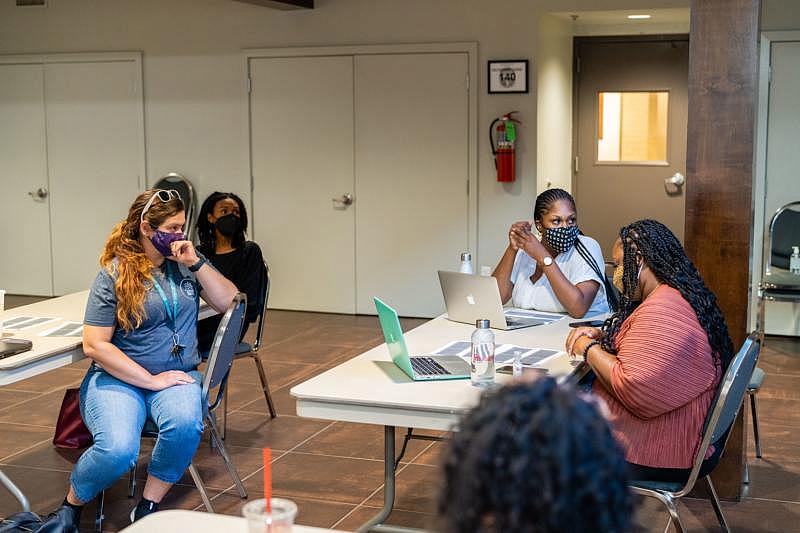Maternal mortality among Black women is a national crisis, but it’s even worse in Oklahoma

The Tulsa Birth Equity Initiative holds a doula training class in August 2021.
(Photo by Christopher Creese/The Frontier)
Oklahoma has one of the highest maternal mortality rates in the country.
It’s an issue I started reporting on in 2019, when it came to my attention Oklahoma had released little information on who was dying and why.
Stark racial disparities in maternal mortality and morbidity exist here. It’s not just Oklahoma, though. Racial disparities in maternal health are a nationwide crisis that’s received considerable news coverage in recent years.
I found that while maternal mortality and morbidity rates among Black women are a pressing nationwide issue, identifying local factors can be vital to solving the problem. I wanted to know why Oklahoma’s rates were higher than in most states, and what Oklahoma was doing differently from the rest of the country.
With six months to dive into this issue, I aimed to look beyond the statistics that have appeared in headlines, better connect with affected communities, and explore possible local solutions to reduce disparities.
Engaging the community
The people who know the issue best are those living it, and I wanted them to help guide my reporting.
The pandemic added an extra hurdle in forming connections with people.
With the help of the community engagement grant from the Center for Health Journalism, I published a survey seeking Oklahomans willing to share their experiences, and shared the survey on Facebook and Twitter. More than 150 people responded, including mothers, doulas and other birth workers.
I also tried to connect with those already doing work to reduce racial disparities. I sat in on doula training classes in Tulsa, and talked to dozens of people working in maternal health and advocates who were willing to share their experiences with me. It took months to connect with the right people, but I ended with numerous meaningful stories.
My second engagement strategy was to host a virtual community panel focused on racial disparities in maternal and infant health. The panelists met in person, but we invited readers to join us virtually on Facebook. Our goal was to share resources and information with families and create a space where people could ask questions.
We partnered with several of the organizations featured in our story to spread awareness of the panel. Hundreds of people tuned in to share experiences and ask questions.
Localizing the issue
Oklahoma’s maternal mortality rate is higher than it is in most states.
The state releases data on racial disparities in maternal mortality rates, but I wanted to look deeper into the issue. I also needed to explore the reasons and what other states were doing differently.
The Oklahoma State Department of Health has released studies over the last couple of decades that highlighted disparities in maternal health outcomes. The studies found, among several issues, that Black women received different information on breastfeeding and illegal drug use compared to white women.
I also looked at the work Oklahoma’s maternal mortality review commission had done around the issue and compared that to other states’ efforts. The commission hadn’t specifically targeted racial disparities in its annual recommendations, but at least 18 other states had.
Then I looked at state policy and legislation.
Research shows that doulas can lead to better pregnancy outcomes. Though Medicaid pays for more than 57% of births in Oklahoma, the program doesn’t reimburse for doula services. At the same time, almost 70% of women who died in Oklahoma because of pregnancy or birth complications were covered by Medicaid.
Despite at least 21 states introducing legislation related to doula coverage in 2021, Oklahoma lawmakers had yet to act.
Keeping that data in mind, I highlighted local programs that were working to train doulas to pair with Black families. They shared the importance of birth workers and how more doulas could save lives.
I met LaKala Williams at a doula training class in Tulsa. She told me she’s seen mothers in her community struggle with breastfeeding and postpartum depression. She wondered if doulas could have made a difference.
“I just think it’s really important to be heard and to be seen in this world,” she said. “And I think a lot of times women of color and people of color are put on the back burner, and they’re not heard and they’re not seen, especially in the health world.”

